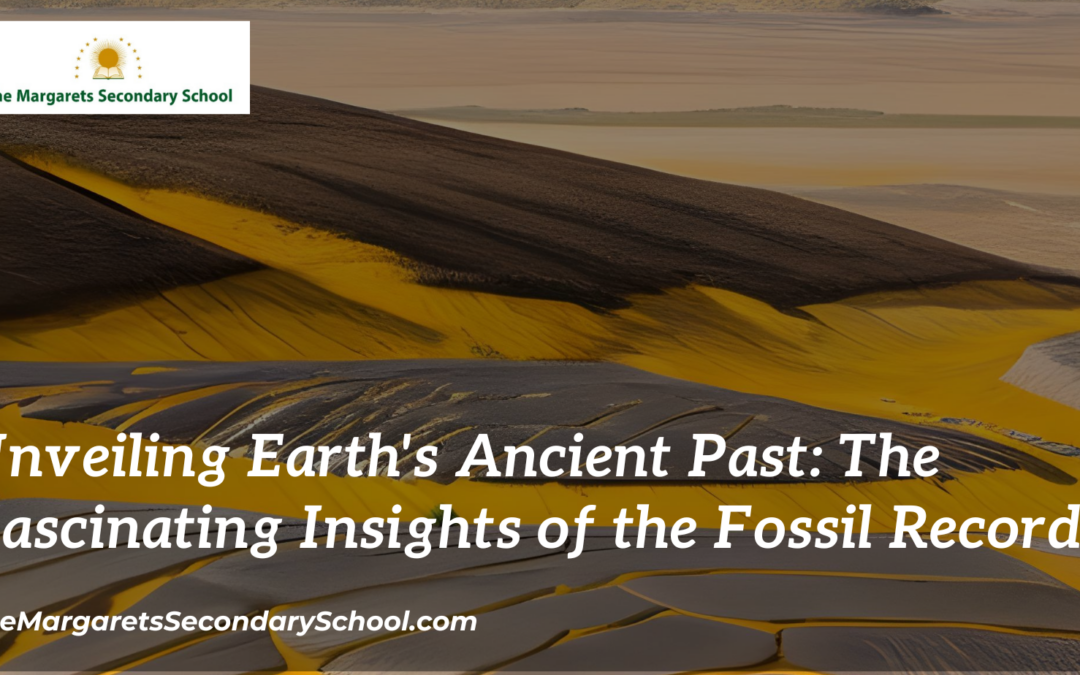The Fossil Record
The Earth’s history is written in stone, imprinted with the remains of long-extinct creatures and the traces of bygone eras. This remarkable record, known as the fossil record, offers us a window into the past, providing invaluable insights into the evolution of life, the changing landscapes, and the dynamic forces that have shaped our planet. In this article, we explore the significance and marvels of the fossil record, a testament to the grand story of Earth’s history.
Fossils: Glimpses of Ancient Life
Fossils are the preserved remains of once-living organisms or evidence of their activities. They can range from bones and teeth to imprints of leaves and footprints. Fossilization occurs when organic materials are replaced by minerals over time, turning the remains into rock-like structures that endure for millions of years. Each fossil is a time capsule, a tangible link to the past, and a source of crucial information about the history of life.
The Importance of the Fossil Record
The fossil record is much more than a collection of ancient curiosities; it is a critical tool for paleontologists and geologists to reconstruct the history of life on Earth. It helps us understand:
- Evolutionary History: Fossils provide evidence of the progression of life forms over millions of years, showcasing the emergence, diversification, and extinction of various species. They offer tangible proof of the principles of natural selection and adaptation proposed by Charles Darwin.
- Transitional Forms: Transitional fossils, also known as “missing links,” bridge the gap between different groups of organisms. These specimens exhibit traits of both ancestral and descendant species, helping us understand the gradual changes that occur during evolution.
- Extinction Events: The fossil record reveals episodes of mass extinction, where significant portions of Earth’s biota were wiped out. By studying these events, scientists can gain insights into the causes, effects, and subsequent recovery of life on Earth.
- Environmental Changes: Fossils can also indicate changes in past environments. The types of fossils found in a particular layer of rock can give clues about the climate, geography, and ecosystems of the past.
Reading the Fossil Record
Understanding the fossil record requires careful examination and interpretation. Paleontologists use various techniques to analyze fossils and reconstruct past life forms:
- Stratigraphy: Fossils are often found in layers of sedimentary rock. Stratigraphy involves studying the arrangement of these layers to determine the relative ages of fossils and the sequence of events in Earth’s history.
- Comparative Anatomy: By comparing the anatomical features of fossils with those of modern organisms, scientists can infer evolutionary relationships and adaptations.
- Radiometric Dating: Radiometric dating methods allow scientists to determine the absolute ages of fossils and rocks by measuring the decay of radioactive isotopes within them.
- Paleoecology: Studying the interactions between ancient organisms and their environments helps researchers reconstruct past ecosystems and understand how species coexisted.
Challenges and Limitations
While the fossil record is invaluable, it is not without challenges. Fossilization is a rare process, and the majority of organisms that ever lived have left no trace. Soft tissues decay quickly and are rarely preserved, leading to an incomplete picture of past life forms. Additionally, the fossil record is biased towards creatures with hard body parts, potentially overlooking delicate or soft-bodied organisms.
Conclusion
The fossil record is a mesmerizing journey through time, allowing us to witness the rise and fall of life forms that have inhabited our planet over billions of years. It tells the story of evolution, adaptation, and survival, while also revealing the impact of cataclysmic events on Earth’s biodiversity. Through the careful study of fossils, we gain a deeper appreciation for the dynamic history of our planet and the extraordinary diversity of life that has inhabited it. As ongoing research advances our understanding, the fossil record remains an enduring testament to the ever-evolving tapestry of life on Earth.





